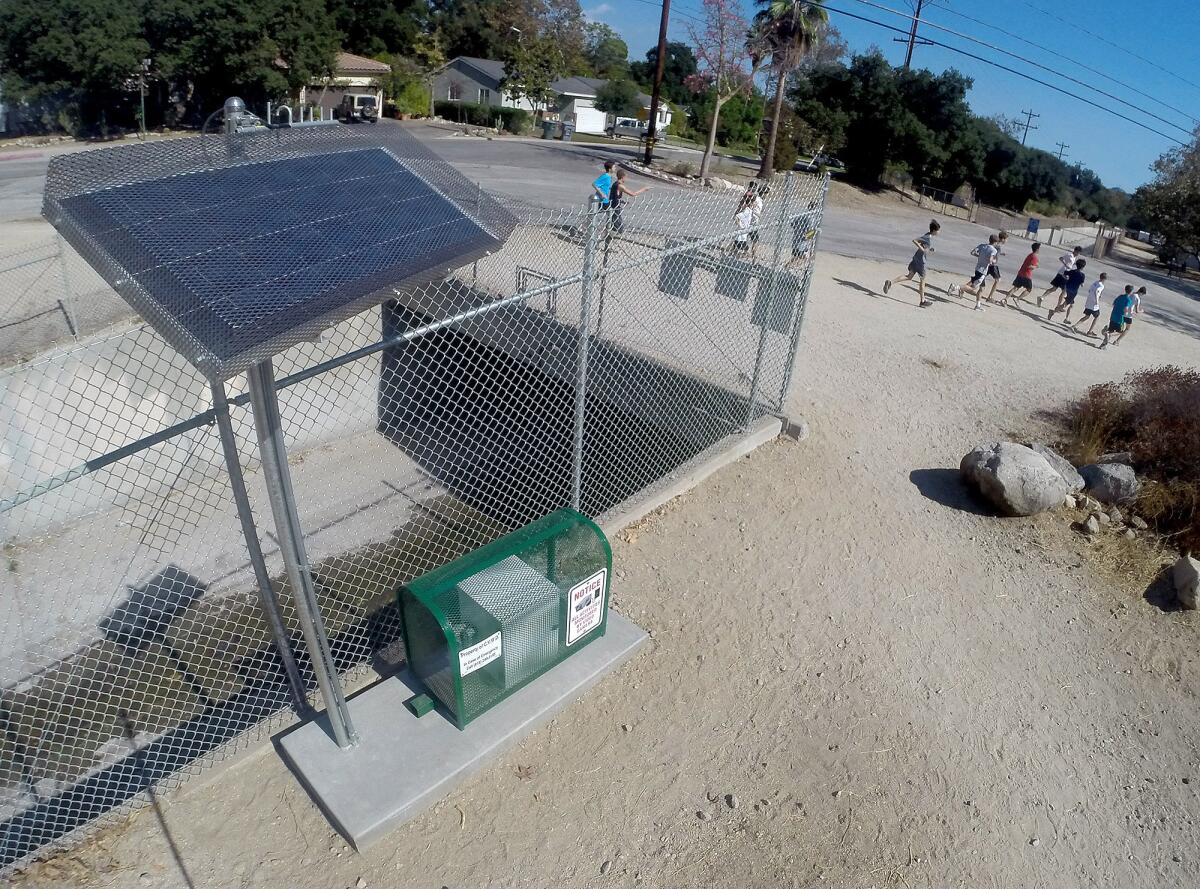District hopes to tap new resource of groundwater

The Foothills area could gain a new way to combat the recurring drought as a study aims to see if an area of the Crescenta Valley can transform into a viable resource of usable groundwater.
Earlier this year, the Crescenta Valley Water District chose Crescenta Valley Park as a location to test for stormwater recharge feasibility. A $158,500 grant from the California Department of Water Resources is funding the study.
Currently, the study is measuring the flow of water in the Verdugo Wash during a storm. If water levels prove plentiful, the study could lead to installing wells diverting runoff water that would normally flow into the Los Angeles River channel and move it underground.
Once filtered and treated, district customers throughout La Crescenta — and small portions of La Cañada, Montrose and Glendale — could use the water.
The park was chosen for its remote and low location in the community, Gould said.
“This is the first time doing a feasibility study in this area,” said David Gould, district engineer for the water district. Gould is overseeing the project with three field technicians. “Droughts are detrimental and will cause costs to increase if we don’t conserve.”
The district, Gould said, receives a majority of its water from the Verdugo Basin, but recent droughts have strained that source.
The study came in response to a drought in 2008. The district spent $1.8 million to import water from the Metropolitan Water District of Southern California via the Foothill Municipal Water District during that drought.
So far, the study has installed monitoring stations at Crescenta Valley Park, measuring the flow of water from the Verdugo Wash when storms move through the region.
“If it ever rains,” he said.
The study remains in its early stages with more intricate data-collecting equipment still to be installed. Monitoring wells, reaching 150 to 200 feet underground, will look at the geology and water saturation of the rocks below.
The wells, covered by manholes, will be located along Honolulu Avenue on the south side of the park and near New York Avenue.
Crescenta Valley Town Council President Robbyn Battles has seen her share of droughts while living in the area for 49 years. She said it will be interesting to see what the study yields.
“I do think it’s important for our water distinct to be on the forefront of finding other resources and ways to collect water,” Battles said. “The more we’re prepared for it, the better off our community will be.”
The study is slated to run for two years, ending in March 2016.